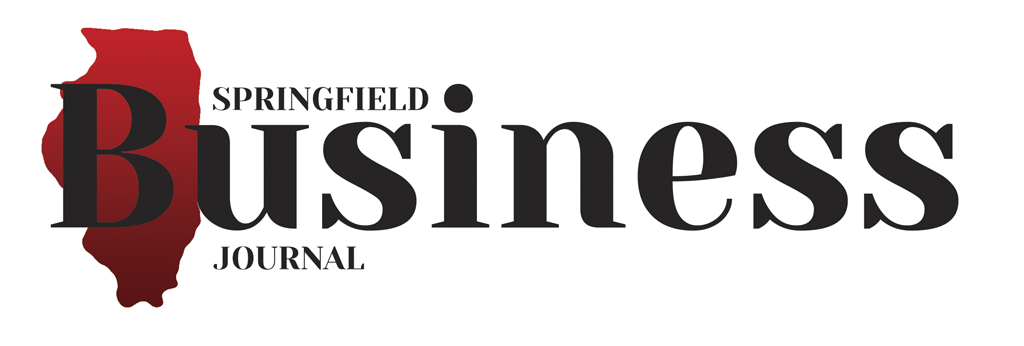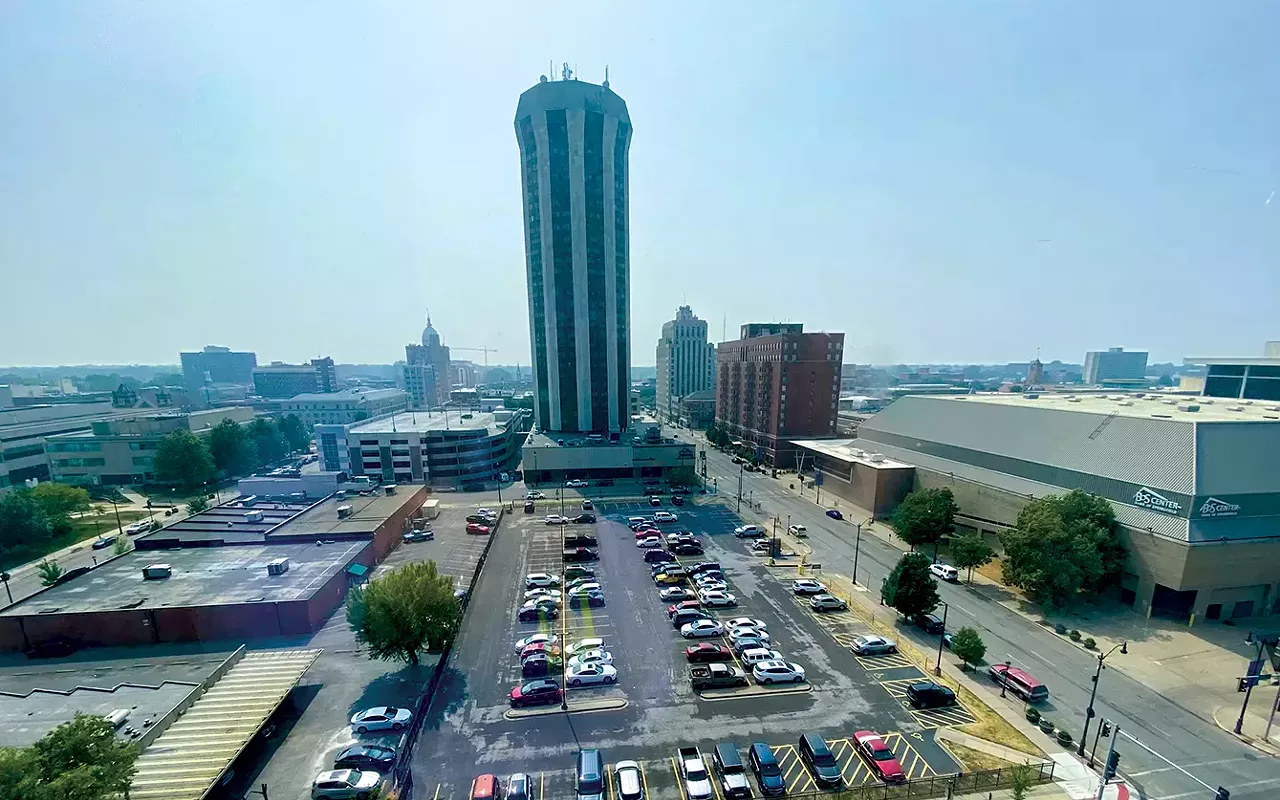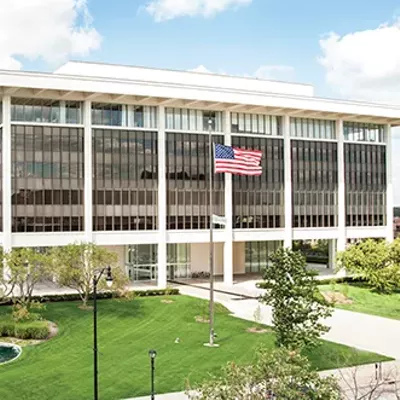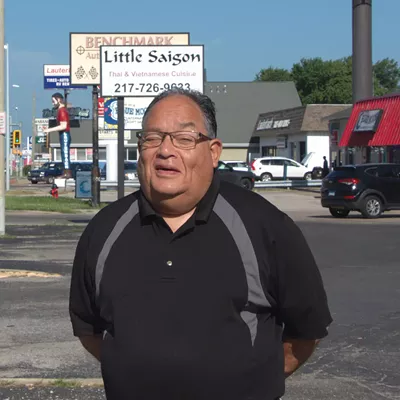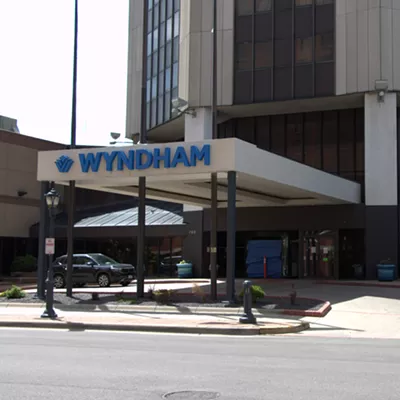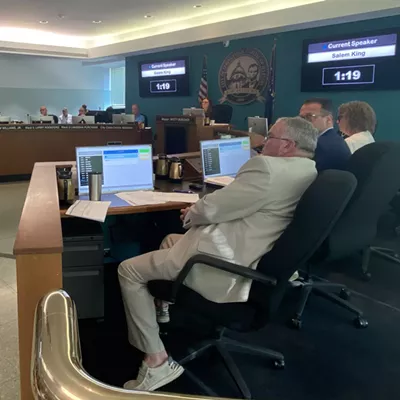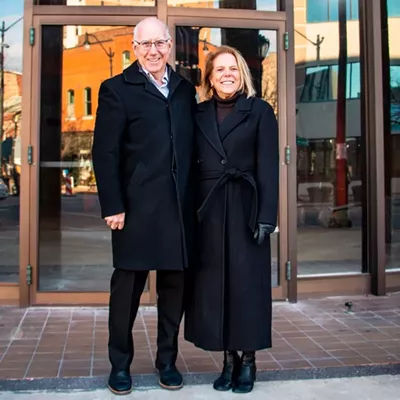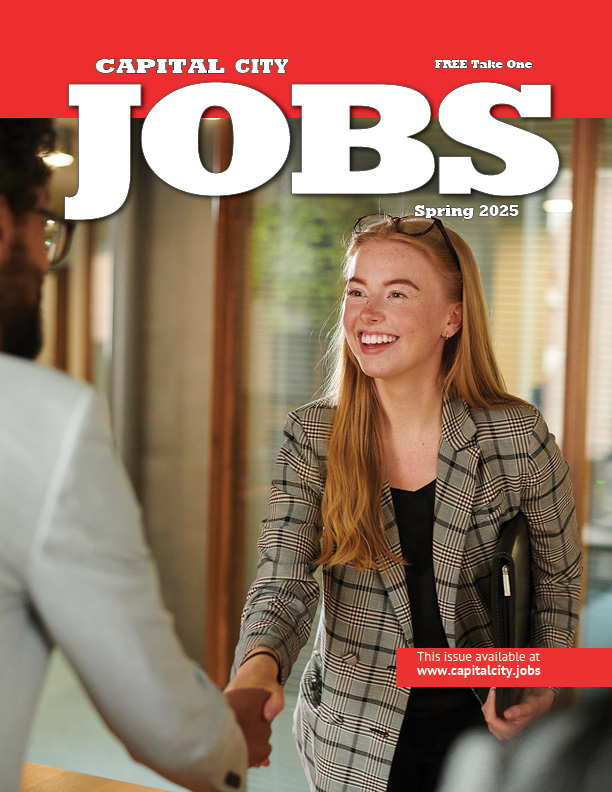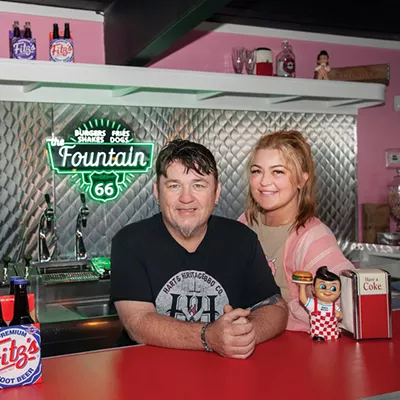Doubling the Bank of Springfield Center's size would result in a similar increase in conventions coming to the capital city, and construction of a new 300-bed hotel adjacent to the center would maximize the expanded facility's potential.
Those were two of the major conclusions from a recently completed feasibility study of the potential impact of a newly formed tourism improvement district on downtown Springfield. The district was formed in December by the Sangamon County Board and covers the entire county.
A proposed expansion of the publicly owned BOS Center is estimated to cost $92.95 million without the hotel. An estimate of cost for the new hotel wasn't immediately available.
The project's cost would be financed in part through an additional tax that guests would pay on hotel rooms in the county on top of regular hotel-motel taxes.
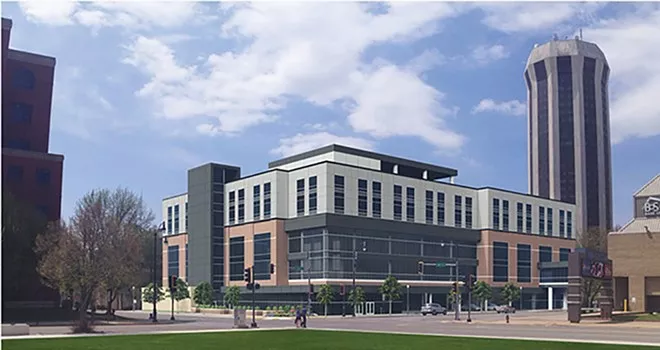
But the company that conducted the study, Conventions, Sports & Leisure International (CSL), suggested that the tax be limited to 2% rather than the state-authorized limit of 5% so Springfield remains competitive with other mid-size communities in Illinois outside Chicago.
The convention center expansion would be built on a 60,000-square-foot parking lot immediately south of the current BOS Center and across East Adams Street, with either a skybridge or ground-level enclosed walkway connecting the two structures.
The Abraham Lincoln Springfield, a DoubleTree by Hilton Hotel that offers 310 rooms, and the Wyndham Springfield City Centre Hotel, with 369 rooms, both serve as "headquarters" hotels for events at the BOS Center.
But CSL said both "are considered substandard headquarters hotel properties relative to modern design standards for full-service, convention-quality hotel products."
County Administrator Brian McFadden, who presented an executive summary of the feasibility study to the Sangamon County Board at its April 8 meeting, said the study's results were encouraging to him and other county and city officials who want to see a revival of downtown Springfield, an increase in business at the BOS Center and related economic benefits that would ensue.
"The great news is they think we have a winner if we expand the BOS Center," he said. "But they're saying to maximize that winner, you have to do the hotel as well. Whether there's the willpower to do something like that in the community is to be determined."
McFadden added, "There's an unmet need for higher-end hotel rooms" for conventions that the city currently is unable to attract.
CSL's recommendations were based on interviews with national event planners, tourism industry experts, community leaders and an analysis of 16 comparable facilities and markets throughout the country.
McFadden said recommendations and options from the study will be considered by a working group that includes representatives from Sangamon County and Springfield governments, local hotels and the Springfield Metropolitan Exposition and Auditorium Authority Board. The property tax-supported SMEAA and its board owns and operates the BOS Center.
"There are a lot of moving pieces here," McFadden said.County Board chairperson Andy Van Meter, a Springfield Republican, said, "The goodwill and support of this project" from governmental and civic leaders in Sangamon County "has been enormous," though many details and potentially sticky issues associated with the funding need to be resolved.
Van Meter said results of the feasibility study gave him "real hope that this project is doable."
Scott Dahl, director of Springfield Convention and Visitors Bureau – a part of city government – has been a longtime advocate for a tourism improvement district. The study "validates that we need an exposition center expansion," he said.
"This is telling us what we already know," Dahl said. "Now it's a question of moving it to the finish line. The main take-away is we need more space."
CSL said the "most desirable situation involving a new headquarters hotel" would be the site of the Wyndham. But CSL says it's not possible to renovate the Wyndham to meet modern design standards.
One option would be to tear down the 30-story, 51-year-old structure and build a new hotel in its place, CSL said. The new hotel ideally would be connected to the expanded BOS Center via a skybridge, the study said.
But it's unknown whether the Wyndham site is a viable option. The Wyndham is owned by Al Rajabi of San Antonio, Texas, and his associates at Tower Capital Group, and Rajabi has been frustrated by his inability to receive zoning approval to renovate the Wyndham into a market-rate apartment complex.
Rajabi's latest proposal was a $58 million renovation that includes a combination of apartments, hotel rooms and convention space, but he hasn't responded to the city's $9 million to $10 million proposed economic assistance package.
Rajabi has put the hotel up for auction in an online event that concludes April 18, but the auction is structured so he can turn down the highest bidder if the reserve price, known only to him and his associates, is not reached.
However, Springfield officials wouldn't have to deal with the Wyndham at all because there's space on the county-owned parking lot for a new 300-bed hotel next to the potential two-level expansion of the BOS Center, according to CSL.
Another option for building a new hotel would be a 36,000-square-foot parcel immediately southwest of the parking lot, CSL said. That parcel is privately owned and currently is the site of Saputo's restaurant at 800 E. Monroe St., as well as a one-story strip of state offices.
With a maximum recommended 2% surcharge, assistance from the state would be needed to help finance the bond issue to expand the BOS Center, McFadden said. Economic incentives for investors would be needed for any future public-private partnership to build a new hotel next to the BOS Center expansion, he said.
CSL also suggested local leaders consider instituting an additional tax on restaurant food to help pay for the project. Such a tax couldn't be instituted by the Sangamon County Board, because the county isn't a home-rule government, but it could be put in place in Springfield by the Springfield City Council.
Springfield doesn't have a restaurant tax, but communities that do have one include Bloomington, which collects 2% additional on restaurant bills, Peoria (2%), Joliet (1%), Champaign (0.5%) and Chicago (0.5%).
The BOS Center expansion is needed to create bigger and more convenient spaces that can be used only for conventions, the CSL study said. The BOS Center opened in 1979 and was renovated in 2010.
The project would have a $77 million annual economic impact and create 557 temporary construction jobs, McFadden said. The project would add 232 permanent jobs to the BOS Center's current 175 part-time and full-time jobs, he said.
Supporters of the tourism improvement district had hoped to begin construction on a BOS Center expansion sometime in 2024. McFadden said he doesn't know how the feasibility study results might affect the timeline.
The 40,000 square feet of exhibition space on the first floor Main Hall and 9,100 square feet in the lower-level ballroom "are considered sub-prime spaces in terms of modern convention industry standards," the study said.
Convention planners want higher ceilings, unimpeded lines of sight, stages and large windows that let in light from outdoors, Dahl said.
The ballroom's below-ground location is "somewhat of a detractor to event planners and attendees," the study said.
The current total of 61,300 square feet of "sellable space" for conventions would more than double through the proposed expansion. The new total sellable space would be 126,300 square feet.
"A convention space expansion of the BOS Center would allow the Main Hall to focus primarily on spectator/entertainment/sports events, while the new space will be unfettered by these events," the study said.
The Main Hall "could be used periodically - rather than frequently - by large convention events that may require excess function space beyond the dedicated convention space," the study said.
